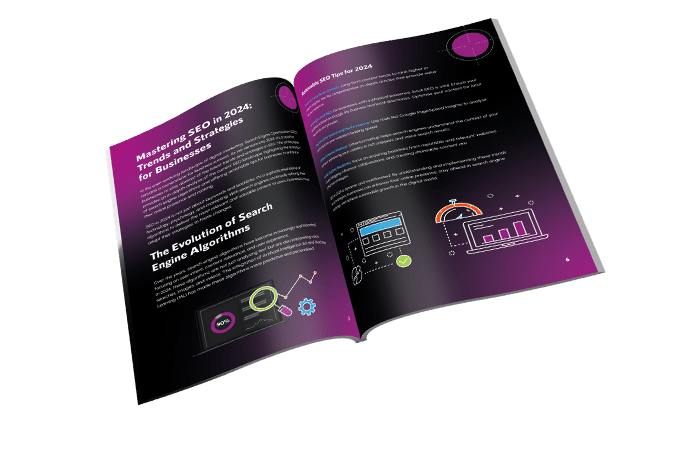News
A Beginner’s Guide to WordPress SEO
WordPress is one of the most powerful and flexible content management systems (CMS) available today, but to truly maximise its potential, you need to optimise your site for search engines. Search Engine Optimisation (SEO) helps your website rank higher on search engines like Google, increasing visibility, traffic, and ultimately, conversions. Whether you’re new to WordPress or looking to refine your SEO strategy, this guide covers the fundamental steps to get started.
Understanding WordPress SEO Basics
WordPress is inherently SEO-friendly, with clean code and a structure that search engines can easily crawl. However, optimising your site requires more than just installing WordPress—it’s about making strategic adjustments to enhance visibility.
Why SEO Matters:
- Increased Traffic: Higher rankings lead to more organic visitors.
- Better User Experience: SEO best practices improve site usability.
- Competitive Advantage: Outrank competitors in search results.
- Long-Term Growth: Sustainable traffic without relying solely on paid ads.
Essential WordPress SEO Steps
1. Choose an SEO-Friendly WordPress Theme
Your theme affects your site’s performance, speed, and overall SEO health. Opt for lightweight, responsive themes like GeneratePress, Astra, or Kadence to ensure fast load times and mobile compatibility.
2. Install an SEO Plugin
SEO plugins streamline the optimisation process by providing on-page guidance. Popular options include:
- Yoast SEO – Offers content analysis, XML sitemaps, and readability checks.
- Rank Math – Provides advanced schema markup and keyword tracking.
- All in One SEO Pack – Ideal for beginners with easy setup and automation.
3. Optimise Your Permalink Structure
A clear and concise URL structure improves readability and ranking potential. Navigate to Settings > Permalinks in WordPress and select the “Post name” option for SEO-friendly URLs (e.g., yourwebsite.com/beginners-guide-wordpress-seo).
4. Conduct Keyword Research
Keywords are the foundation of SEO. Use tools like Google Keyword Planner, Ahrefs, or Ubersuggest to find relevant keywords with high search volume and low competition. Integrate these naturally into your content, headings, and meta descriptions.
5. Create High-Quality, Optimised Content
Content is king in SEO. Follow these best practices:
- Use headings (H1, H2, H3, etc.) to structure your content.
- Write compelling meta descriptions (150-160 characters) with primary keywords.
- Incorporate internal and external links to improve user engagement.
- Optimise images with descriptive alt text and compressed file sizes.
6. Improve Site Speed and Performance
Page speed is a ranking factor. Enhance performance by:
- Using caching plugins like WP Rocket or W3 Total Cache.
- Optimising images with Smush or ShortPixel.
- Enabling a Content Delivery Network (CDN) like Cloudflare.
- Choosing fast, reliable hosting providers like Kinsta or SiteGround.
7. Ensure Mobile-Friendliness
With over half of web traffic coming from mobile devices, having a responsive site is crucial. Use Google’s Mobile-Friendly Test to check compatibility and ensure fast, smooth performance across devices.
8. Implement Technical SEO
Technical SEO ensures your site is properly structured for search engines. Key elements include:
- XML Sitemaps: Automatically generate them with Yoast SEO.
- Robots.txt File: Control what search engines can crawl.
- Schema Markup: Enhance search results with rich snippets using Rank Math.
- SSL Certificate: Secure your site with HTTPS to build trust and improve rankings.
9. Build High-Quality Backlinks
Backlinks (links from other sites to yours) are a strong ranking signal. Gain backlinks by:
- Writing guest posts for reputable blogs.
- Listing your business in online directories.
- Creating shareable, valuable content.
- Engaging in relevant industry forums and communities.
10. Monitor and Improve Your SEO Performance
SEO is an ongoing process. Use tools like Google Search Console and Google Analytics to track your site’s performance, identify issues, and refine your strategy. Regularly updating content and fixing broken links will help maintain your rankings.
Conclusion
WordPress SEO doesn’t have to be overwhelming. By following these foundational steps—choosing the right theme, optimising content, improving site speed, and building backlinks—you’ll be well on your way to improving your site’s visibility and driving more organic traffic. Keep learning, stay updated with algorithm changes, and continue refining your SEO approach to stay ahead in the digital landscape.





The Ultimate Social Media Guide
With the ever-growing power of social media, we use the latest techniques, video, and animation software to craft eye-catching social media assets that make your brand pop. Our designers, wielding Adobe Creative tools, create distinctive animations and graphics to illuminate your brand story and highlight your products or services. Want a unique design? No problem – we also offer bespoke designs to match your brand aesthetic.